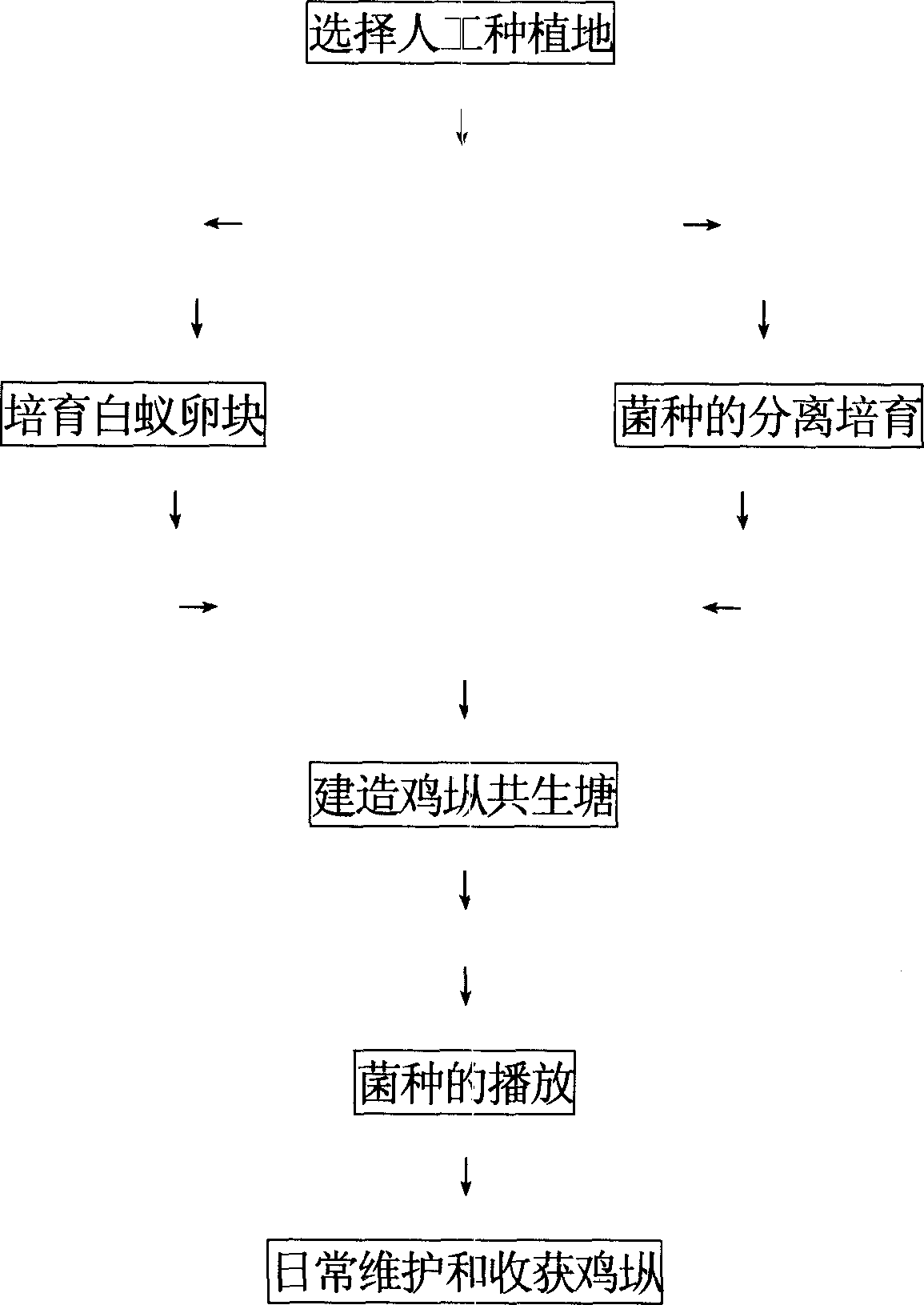Method for breeding collybia albuminosa artificially by symbiosis of termite
A termite, artificial technology, applied in the fields of botanical equipment and methods, horticulture, application, etc., can solve the problems of limited output and difficult to meet, etc.
- Summary
- Abstract
- Description
- Claims
- Application Information
AI Technical Summary
Problems solved by technology
Method used
Image
Examples
Embodiment 1
[0036] 1. Choose a planting location:
[0037] Go to the field to check whether the soil is neutral to slightly acidic soil, the pH value is 6, the thickness of the soil layer is 800mm, and the natural humidity of the soil is good; check whether there are wild chickens in this area growth; check whether there is a source of pollution in the surrounding environment, whether it will affect the chicken Growth is affected; check the surrounding water conditions to see if there is water for irrigation during drought. Under normal circumstances, if these conditions can meet the requirements, you can choose to be a chicken planting place.
[0038] 2. Breeding termite eggs:
[0039] ①. Select the breeding site where there are wild chickens in the plot of the nest;
[0040] ②. Cut the sisal stalks into 300mm-long sections and use them as culture materials. Generally, 250 sections of sisal stalks are cultivated per mu;
[0041] ③. Put 20% of poppy seeds, 15% of honey, 20% of s...
Embodiment 2
[0082] 1. Choose a planting location:
[0083] Go to the field to check whether the soil is neutral to slightly acidic soil, the pH value is 7, whether the thickness of the soil layer meets the requirements, and whether the natural humidity of the soil meets the requirements; check whether there are wild chickens in this area growth; check whether there is a source of pollution in the surrounding environment, whether it will affect the chicken Growth is affected; check the surrounding water conditions to see if there is water for irrigation during drought. Under normal circumstances, if these conditions can meet the requirements, you can choose to be a chicken planting place.
[0084] 2. Breeding termite eggs:
[0085] ①. Select the breeding site where there are wild chickens in the plot of the nest;
[0086] ②. Cut the sisal stalks into 300mm-long sections and use them as culture materials. Generally, 250 sections of sisal stalks are cultivated per mu;
[0087] ③. P...
Embodiment 3
[0128] 1. Choose a planting location:
[0129] If planting 1 mu of land, go to the field to check whether the soil is neutral to slightly acidic soil, whether the pH value of 5.5 meets the requirements, whether the thickness of the soil layer meets the requirements, and whether the natural humidity of the soil meets the requirements; check whether there are wild chickens in this area growth; check whether there is a source of pollution in the surrounding environment, whether it will affect the chicken Growth is affected; check the surrounding water conditions to see if there is water for irrigation during drought. Under normal circumstances, if these conditions can meet the requirements, you can choose to be a chicken planting place.
[0130] 2. Breeding termite eggs:
[0131] ①. Select the breeding site where there are wild chickens in the plot of the nest;
[0132] ②. Cut the sisal stalks into 300mm-long sections and use them as culture materials. Generally, 250 sec...
PUM
| Property | Measurement | Unit |
|---|---|---|
| Thickness | aaaaa | aaaaa |
Abstract
Description
Claims
Application Information
 Login to View More
Login to View More - R&D
- Intellectual Property
- Life Sciences
- Materials
- Tech Scout
- Unparalleled Data Quality
- Higher Quality Content
- 60% Fewer Hallucinations
Browse by: Latest US Patents, China's latest patents, Technical Efficacy Thesaurus, Application Domain, Technology Topic, Popular Technical Reports.
© 2025 PatSnap. All rights reserved.Legal|Privacy policy|Modern Slavery Act Transparency Statement|Sitemap|About US| Contact US: help@patsnap.com



